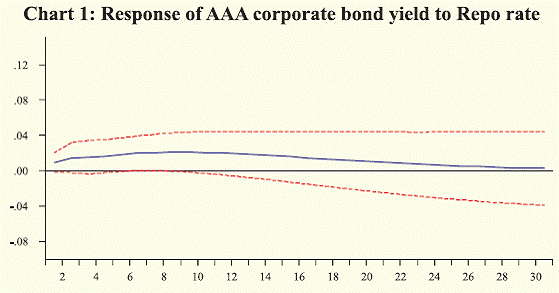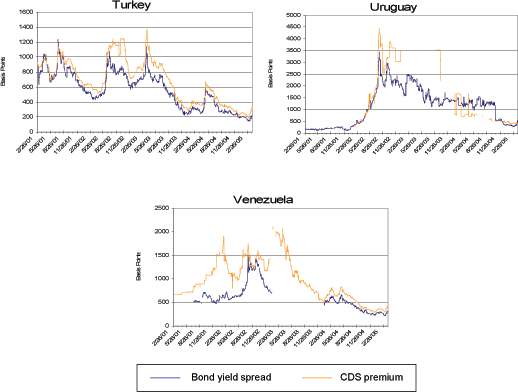Is Default Event Risk Priced in Corporate Bonds
Post on: 26 Апрель, 2015 No Comment

Text-only Preview
Priced in Corporate Bonds?
Joost Driessen
University of Amsterdam
This Version: March, 2002
I thank Frank De Jong, Siem-Jan Koopman, Bertrand Melenberg, Theo Nijman, Kenneth Singleton, and an
anonymous referee for many helpful comments and suggestions. I also thank seminar participants at the 2001
ESSFM meeting in Gerzensee, INSEAD, Tilburg University, the Tinbergen Institute, NIB Capital Management
and ABN-AMRO Bank for their comments.
This is a revision of an earlier paper that was titled The Cross-Firm Behaviour of Credit Spread Term Structures.
Joost Driessen, Finance Group, Faculty of Economics and Econometrics, University of Amsterdam, Roetersstraat
11, 1018 WB, Amsterdam, The Netherlands. Tel: +31-20-5255263. E-mail: [email protected]
Is Default Event Risk
Priced in Corporate Bonds?
Abstract
We identify and estimate the sources of risk that cause corporate bonds to earn an
excess return over default-free bonds. In particular, we estimate the risk premium
associated with a default event. Default is modelled using a jump process with
stochastic intensity. For a large set of firms, we model the default intensity of each
firm as a function of common and firm-specific factors. In the model, corporate bond
excess returns can be due to risk premia on factors driving the intensities and due to
a risk premium on the default jump risk. The model is estimated using data on
corporate bond prices for 104 US firms and historical default rate data. We find
significant risk premia on the factors that drive intensities. However, these risk
premia cannot fully explain the size of corporate bond excess returns. Next, we
estimate the size of the default jump risk premium, correcting for possible tax and
liquidity effects. The estimates show that this event risk premium is a significant and
economically important determinant of excess corporate bond returns.
JEL Codes: E43; G12; G13.
Keywords: Credit Spread; Default Event; Corporate Bond; Credit Derivative; Intensity Models.
1 Introduction
Given the extensive literature on risk premia in equity markets, relatively little is known about
expected returns and risk premia in the corporate bond market. Recent empirical evidence by
Elton et al. (2001) suggests that corporate bonds earn an expected excess return over default-free
government bonds, even after correcting for the likelihood of default and tax differences. As
shown by Elton et al. (2001), part of this expected excess return is due to the fact that changes
in credit spreads (if no default occurs) are systematic, implying that the risk of these changes
should be priced. The current empirical literature has, however, neglected the possibility that the
risk associated with the default event itself is (also) priced. Typically, a default event causes a
jump in bond prices and this jump risk may have a risk premium. Jarrow, Lando, and Yu (JLY,
2001) and Yu (2001) discuss the possible existence of a default jump risk premium, but do not
estimate the size of this premium.
In this paper, we distinguish the risk of credit spread changes, if no default occurs, and the
risk of the default event itself. We use credit spread data of many different firms and historical
default rates to estimate the size of the default jump risk premium, along with the risk prices of
credit spread changes. We show that, in order to fully explain the size of expected excess
corporate bond returns, an economically and statistically significant default jump risk premium
is necessary, on top of the risk premia that are due to the risk of credit spread changes.
By estimating the default jump risk premium, this paper essentially tests the assumptions
underlying the conditional diversification hypothesis of JLY (2001). These authors prove that,
if default jumps are conditionally independent across firms and if the economy contains an
infinite number of bonds, default jump risk cannot be priced. Intuitively, in this case the default
jump risk can be fully diversified. Our results indicate that default jumps are not conditionally
independent across firms and/or that not enough corporate bonds are traded to fully diversify
default jump risk. A particularly appealing explanation for the existence of a default jump risk
premium is that investors take into account the possibility of a multiple defaults scenario (a
contagious defaults scenario).
The model that we use is specified according to the Duffie and Singleton (1999) framework.
In these intensity-based models, firms can default at each instant with some probability. In case
-1-
of a default event, there is a downward jump in the bond price that equals a loss rate times the
bond price just before default. The product of the risk-neutral default intensity and the loss rate
equals the instantaneous credit spread. Like Duffee (1999) and Elton et al. (2001), we assume
a constant loss rate and allow the default intensity to vary stochastically over time. We model
each firms default intensity as a function of a low number of latent common factors and a latent
firm-specific factor. This extends the analysis of Duffee (1999), who estimates a separate model
for each firm. As in Duffee (1999), all factors follow square-root diffusion processes. We use
a latent factor model, since Collin-Dufresne et al. (2001) show that observable financial and
economic variables cannot explain the correlation of credit spread changes across firms. In line
with empirical evidence provided by Longstaff and Schwartz (1995) and Duffee (1998), the
model also allows for correlation between credit spreads and default-free interest rates, which
are modelled by a two-factor affine model used by Duffie, Pedersen, and Singleton (2001).
Finally, we model the relation between risk-neutral and actual default intensities. The ratio of
the risk-neutral default intensity and the actual intensity defines the jump risk premium, which
we assume to be constant over time.
In total, the model can generate expected excess corporate bond returns in four ways. First,
through the dependence of credit spreads (or, equivalently, default intensities) on default-free
term structure factors. Second, because the risk of common or systematic changes in credit
spreads across firms is priced. Third, via a risk premium on firm-specific credit spread changes,
and, fourth, due to a risk premium on the default jump.1 Empirically, we find that all these terms
contribute to the expected excess corporate bond return, except for the risk of firm-specific credit
spread changes.
We use a data set of weekly US corporate bond prices for 592 bonds of 104 firms, from 1991
to 2000. All bonds in the data set are rated investment-grade. The estimation methodology
consists of four steps. First, using data on Treasury bond yields, we estimate the two-factor
model for the default-free term structure using Quasi Maximum Likelihood based on the Kalman
filter. Second, we estimate the common factor processes that influence corporate bond spreads
of all firms, again using Quasi Maximum Likelihood based on the Kalman filter. Third, the
1Yu (2001) also provides a decomposition of corporate bond returns, but does not estimate the size of the
components.

-2-
residual bond pricing errors are used to estimate the firm-specific factor for each firm. In the
final step, we use data on historical default rates to estimate the default jump risk premium.
The empirical results are as follows. We estimate a model with two common factors and a
firm-specific factor for each firm. The common factors are statistically significant and reduce
the corporate bond pricing errors. These factors have economically and statistically significant
risk prices, while the risk associated with the firm-specific factors of our model is not priced.
Thus, our results indicate that the market-wide spread risk, represented by movements in the
common factors, is priced in the corporate bond prices, whereas the firm-specific risk is not. We
also find a negative relation between credit spreads and the default-free term structure.
Next we show that, if we would not include a default jump risk premium in this model, the
model largely overestimates observed default rates, and, therefore, underestimates expected
excess corporate bond returns. Subsequently, we estimate the size of the default jump risk
premium using historical default rate data, and find an economically and statistically large value
for this parameter. For example, the default jump risk premium accounts for about 68% of the
total expected excess return on a 10-year BBB rated corporate bond. If we correct for tax and
liquidity differences between corporate and government bonds, the estimate for the risk premium
remains economically important and, in most cases, statistically significant.
Our results on the default risk premium are somewhat different from the results on the test
of conditional diversification in JLY (2001), who use the estimates of the Duffee (1999) model.
The main reason for these differences is that JLY (2001) do not use historically observed
cumulative default rates to perform their test, but the cumulative default rates implied by a
Markov model for rating migrations. The observed cumulative default rates are, however, much
lower than these model-implied default rates. Using cumulative default probabilities that are
based on the Markov migration model therefore leads to downward biased estimates of the
default jump risk premium.
We end the paper with an application of our model to the pricing of a nth-to-default swap.
This application highlights the importance of a multiple defaults scenario. Incorporating such
a scenario leads to a large change in the price for a credit default swap, relative to a model with
independent default events. Finally, we note that another practical application of our model is
that it allows financial institutions to extract actual default probabilities from corporate bond
prices, which is useful for risk management purposes.
-3-
The remainder of the paper is organized as follows. Section 2 introduces the model. Section
3 describes the corporate bond data set. In Section 4, the estimation methodology for the factor
model is outlined, and the estimation results for the factor model are presented. In Section 5, we
discuss the estimation of the default jump risk premium and present the results, as well as
corrections for tax and liquidity effects. In Section 6 we apply our model to price basket credit
default swaps. Section 7 concludes.
2 A Model for Defaultable Bond Prices
2.1 Model Setup
The first part of the model describes default-free interest rates. We assume that US Treasury
bonds cannot default. This part of the model is identical to the affine model for the default-free
term structure of Duffie, Pedersen, and Singleton (DPS, 1999). The model implies the following
process for the instantaneous default-free short rate r under the true or actual probability














